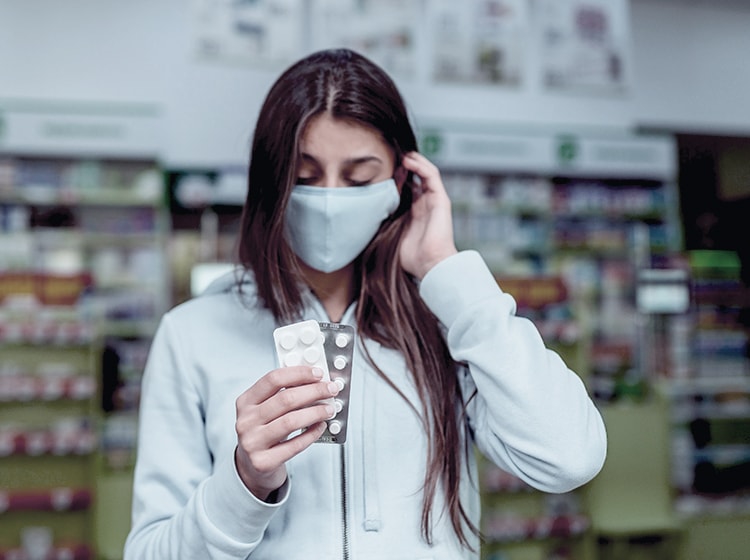Generics and originators: which are the best?
Most of the medical products (MPs) on the modern pharmaceutical market are generic drugs («generics»). Russia ranks third in the generics segment share (over 80%) in the world after China and India.

However, the market structure of the G7 countries is ranking as follows: 12% of generics in the USA, 30% in Japan, 35% in Germany, 50% in France, 55% in the UK [1,2].
One of the most critical problems facing the patient today is the problem of choice between proprietary originators and its copies — generics. When choosing a drug, a patient often focuses on the price only, and not on its efficacy and safety. Let us consider what constitutes an «overprice» for an originator. The development of a new medical product is a long (up to 15 years) and costly process. The manufacturer must both find and synthesize a new molecule and spend a great amount of funds for experimental (preclinical studies in laboratory animals to obtain a scientific evidence of the possibility of clinical studies in humans) and clinical studies (assessment of the drug properties in humans), for equipment and training of employees for further advertising and marketing. In view of this, in order to return the money spent, the developer has patent protection for manufacturing and sale of the MP. Upon expiration of the patent protection period (20 years in the Russian Federation), generics (copies) enter the market. These generics must have the same quantitative and qualitative composition of active substances (excipients can differ) and the same dosage form as the originator, and which bioequivalence to the originator is confirmed by relevant clinical studies [3]. Coupled with significantly low cost of the process of generic creation compared to the originator, a generic is always cheaper.
Data of clinical bioequivalence studies are used to prove the identity (equivalence) of the generic to the originator as required for marketing authorization of the medicinal product.
A bioequivalence study is a type of clinical study to compare the absorption rate and extent of an originator and a generic into the bloodstream after administration of the same doses and dosage form in healthy volunteers. Medical products are equivalent if they show the same absorption rate and extent into the blood (bioavailability).
The organization of clinical studies is a very
- Development of the study design and drawing up the main study documents (protocol, informed consent form, etc.): this stage is very important when planning the future clinical study. Purposes and objectives of the clinical study, the protocol, which serves as a «manual» for conducting the study for the study team, are developed at this stage. The protocol describes the entire course of the clinical study;
- Obtaining authorization to conduct the clinical study from the regulatory authorities and approval by the Ethics Council: bioequivalence studies are conducted with participation of healthy volunteers in accordance with the law and compliance with the ethical principles;
- Selection and randomization of patients: patients are selected by the inclusion/exclusion criteria and «random» distribution of patients between the groups of the medicinal products (investigated medicinal product and originator);
- Conducting the study in accordance with the study protocol and Good Clinical Practice (GCP);
- Data processing and analysis of results obtained;
- Compiling the final report: the report contains a description of the methodology of the entire clinical trial, the results of clinical, analytical and statistical processing of the data obtained and conclusions;
- Submission of the obtained results to the regulatory authorities and obtaining a marketing authorization.
Thus, the data obtained during the clinical studies allow drawing up an important conclusion about the equivalence of the generic to the originator. If the generic equivalence is proven by the CS results, the regulatory authorities issue a Marketing Authorization for the medicinal product and in this case only the investigated medicinal product enters the pharmacy network.
Therefore, the generics, which equivalence is proven by clinical studies, are of high quality, identical to the originator with an attractive price for the buyer.
Literature
- Баула О.Ю. Современные регуляторные требования к исследованиям и регистрации генерических лекарственных средств. — М., «Фармсодружество», 2007;
- Верлан Н.В., Ковальская Г. А. Взаимозаменяемость лекарств с позиций фармацевтического соответствия и клинической эффективности и безопасности.- «Качественная клиническая практика».-2016.-№ 3.-С.66−71;
- Решение совета ЕЭК от 03,11,2016 № 78 «О правилах регистрации и экспертизы лекарственных средств для медицинского применения»;
- Талибов О.Б. Генерики и эквивалентность лекарственных препаратов. // Медицинская газета «Здоровье Украины». — Киев, 2008. — № 5. — С. 12−16.
